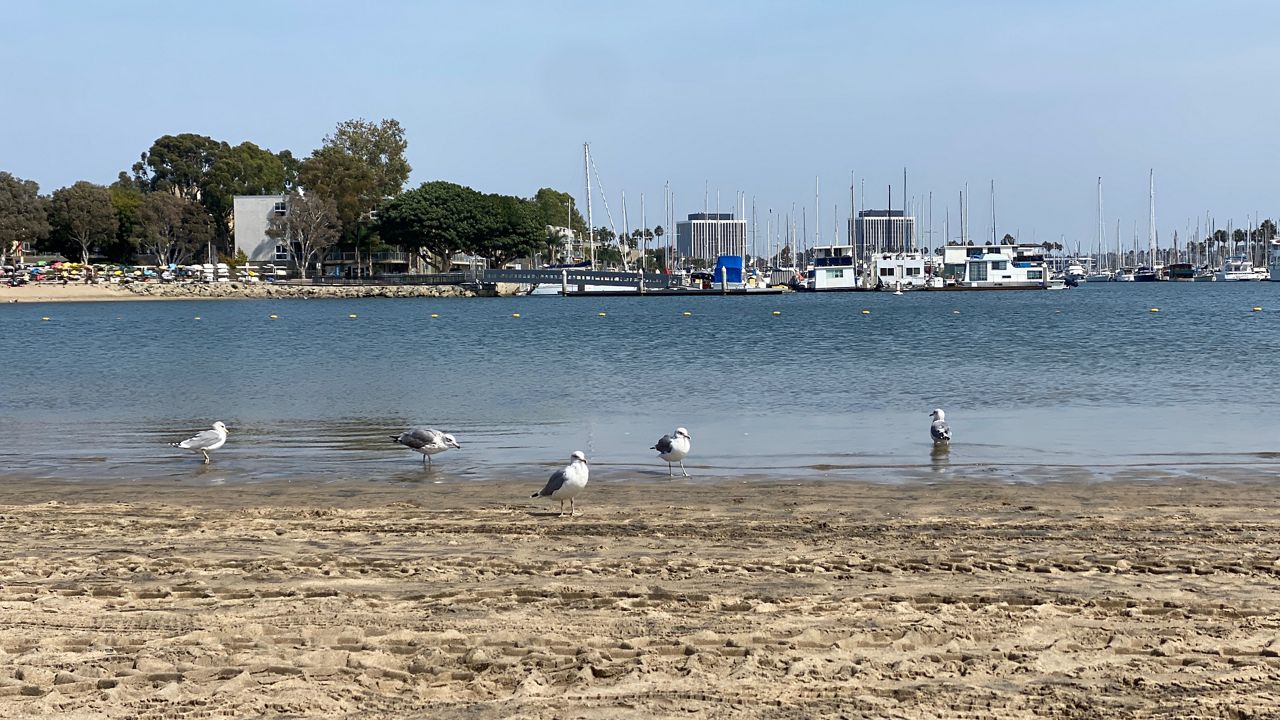Despite a false start last month, Los Angeles County is seeking to improve water quality at Mother’s Beach with some addition by subtraction. Through the use of “bird wire,” the county hopes to discourage seagulls, pigeons and other pest birds from spreading their waste in the water.
Mother’s Beach, a family-friendly Marina del Rey swimming hole, is popular for its calm waters and easy access on the Westside. However, those very same things that make it a great place for family hangouts are often the things that cause it to have infamously poor water quality.
The beach’s calm waters are due to a lack of wave action in the harbor, which is great for boats and beginning swimmers. But that same lack of wave action means that fresh ocean water isn’t cycled in to replace unclean water. Those picnics give seagulls and pigeons plenty of food to scavenge. That food is eaten by the birds, goes through the birds, then goes into the sand and into the water.
Combine the bird waste with other harbor-area pollutants, like boat emissions, and you’ve got a good combination for bad water. The beach is perennially listed on Heal the Bay’s annual “Beach Bummer“ list, and it frequently lands on the Los Angeles County Department of Public Health’s “Ocean Water Use” warning list.
To reduce bird waste bacteria in the water, entities like LA County try bird abatement programs. Early in September, the LA County Department of Beaches and Harbors installed 12 posts — similar to telephone poles — just off the shoreline of Mother’s Beach and in the water. Those posts were installed with the intention of stringing up long, thin monofilament wires between them. However, before the wires could be installed, the poles were removed following a clerical error.
According to Beaches and Harbors spokesperson Nicole Mooradian, construction in the water requires permit approval from the California Coastal Commission; unfortunately, the county installed the poles before securing the permit. Once the county realized its error, the polls were removed.
Noaki Schwartz, spokesperson for the Coastal Commission, said the County said that poles were constructed in the wrong size and placed in the wrong location, so the county “decided to take them down.”
“If and when the county decides to put up new poles, our staff will review this and let them know if a permit is required,” Schwartz said.
Bird wire has previously been installed at Mother’s Beach, on the sand atop shorter traffic sign-like poles, but was removed at some point during the pandemic. Apparently, the poles were a magnet for vandals. However, upon removal of the poles, bacterial counts began to climb at Mother’s Beach.
“We’re still looking to bring them back, but on the sand,” Mooradian said.
There are a few different explanations as to how and why bird wire works in its various incarnations. In some cases, the wires block areas where birds like to roost; in others, they reflect light, scaring the birds away. The way that Mooradian explains it, the line is set up in areas above where birds like to sit, making them uncomfortable.
“Bird abatement is typically a first step in water quality improvement plans,” said Luke Ginger, water quality scientist at Heal the Bay.
Coastal counties and municipalities have been conducting microbial source tracking studies, identifying which animals are contributing to fecal pollution, Ginger said.
Abatement programs usually include installing nets, plastic spikes or other deterrent devices to annoy birds away. Others use dogs or predator birds (like falcons) to scare nuisance birds away, but those can be costly.
LA County once considered hiring a falconer, Mooradian said, but balked at both the price and the potentially harmful effects on nearby wildlife the county wants to keep around.
The county has also tried a number of other water quality measures over the years alongside bird abatement.
While wildlife abatement might be useful, Ginger said the real key to improving water quality is facing down human-caused issues.
“Fecal matter from birds does pose a health risk to humans, but not as much as human fecal matter,” Ginger said.
For instance, young swimmers with leaky diapers and beaches in developed areas, like the Santa Monica Pier, tend to have worse water grades than those in natural landscapes.
“This suggests to me that birds aren’t the sole driver of water quality at beaches across the state — the inputs from the watershed are," he said.
LA County recommends able beachgoers abide by a “pack-in/pack-out” strategy: Be ready to pack anything you bring to the beach into a trash bag and take it back to throw out at home.
“Don’t feed the birds, pick up trash and pack-in/pack-out,” Mooradian said. “That not only removes potential litter, but there’s less food for birds.”



